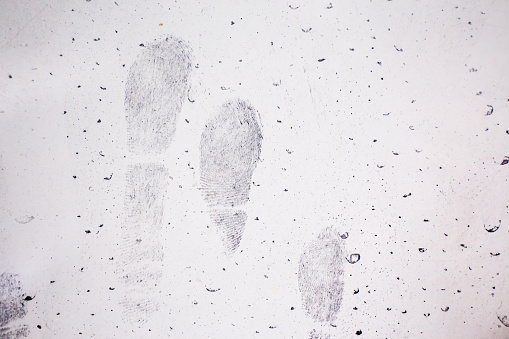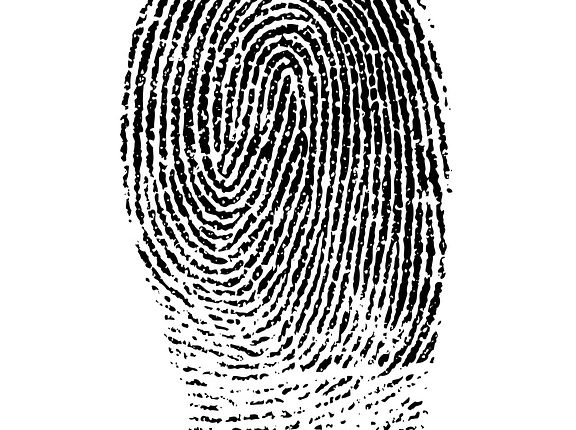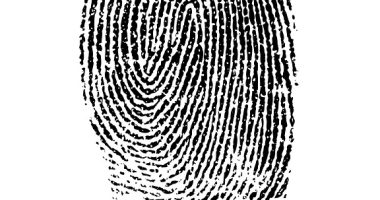There are 3 types of fingerprint that are present in the crime scene.
VISIBLE (PATENT)
PLASTIC
LATENT
before the latent fingerprint development method, the types of fingerprints are:
PATENT FINGERPRINT: patent fingerprints are those print which are visible to our naked eyes. This print occurs when the foreign substance on the fingerprint are transferred to the surface such as woods, metal, glass, clothes etc. these prints are in blood, ink, dust or mud. They are rarely found at the crime scene
PLASTIC FINGERPRINT: These are the visible prints that are left on the smooth surface and form a 3 dimensional image. Such as soap, wax etc.
LATENT FINGERPRINT: the latent prints are those print that are not visible by our naked eyes. These prints are formed by the sweat and oil that are left behind an object. These prints can be made visible by various development techniques.

Latent fingerprint development: It is based on the biochemistry of the body’s natural oils and sweat. Two major glands in dermis is apocrine and ecrine produces sweat. The print is 99% water and rest is trace amount of amino acids, lipids urea and some amount of minerals. These prints are the chance prints.
LATENT FINGERPRINT DEVELOPMENT
the latent fingerprint development methods are :
- NIN HYDRIN METHOD: ninhydrin was first described by when Siegfried Ruheman in 1910 mistakenly prepared the compound that react with skin and amino acids to produce a purple color compound.
In this latent fingerprint development method the amino acids that are present in the sweat reacts with the nin hydrin and form a purple color compound diketohydrindylidine-diketohydrindamine and as it was discovered by Ruheman so it is well known as Ruheman’s purple. By product of these reactions include an aldehyde derivatives of the amino acids and carbon dioxide.
The procedure for developing latent fingerprints involves spraying the nin hydrin solution on the surface containing the impressions. The surface is then heated for short time.
This technique is now amongst the most popular method of the latent fingerprint development on paper and porous substances. This method is useful for new as well as old impressions.
PROPERTIES OF NIN HYDRIN: nin hydrin is a crystalline solid that is colorless to pale yellow in color and is highly soluble inn polar solvents.

SILVER NITRATE METHOD: In a latent fingerprint development, the grease and moisture will evaporate but the salts and amino acids from the sweats does not evaporate. In this method, the NaCl present in the sweat reacts with the silver nitrate solution. The solution of silver nitrate is sprayed onto the surface then the treated surface is exposed to the sunlight light or UV which reduces the silver chloride (AgCl) to metallic silver, revealing the prints as gray- black stains. The developed prints are photographed and stored in the dark.
This method is useful for the paper, cardboard, and prints those are as old as two years were developed through this technique.
- IODINE FUMING METHOD: this latent fingerprint development method is useful for porous and semi-porous surfaces such as paper, cardboard, etc where the fats and oils of the greasy prints absorbed on the surface. When vapors of iodine are sprayed onto the surface, a temporary yellow- brown color was developed.
The iodine can be sprayed by fuming gun method, fuming cabinet method, powder dusting method.
Prints by the latent fingerprint development method are not permanent in nature. For this reason, the iodine developed prints have to be photographed immediately. It Is possible to fix the prints by using various chemical reagents.
Iodine is reacts with starch solution to give a stable, dark blue complex. The color of the prints changes from brown to deep blue color. Another reagent to fix the iodine developed prints is 7, 8-benzoflavone.
- CYANOACRYLATE METHOD: the ridge details of the fingerprints on non-porous surfaces such as plastic, glass can be exposed to cyanoacrylate fumes. This method is also called as super glue fuming.
The vapors of cyanoacrylate are selectively attracted to the residues of impression, where it builds as crystalline white deposit that can be photographed, or copied onto tape strips.
Monomer of CA ester fumes are introduced to the latent prints and bind with amines and carboxylic groups in the residue. The monomer is reacting with another CA monomer and form a polymer.
PRESERVATION OF DEVELOPED PRINTS
After the latent fingerprint development method , the prints must be preserved for future comparison and use in court of evidence.
The majority of developed prints are preserved by taking the photographs. Any camera that takes up close up view can be used. In addition, the photograph of overall views of print’s location with respect to other evidences at the crime scene. But special fingerprints cameras with shutter, lens, lightening system have been developed are available with the fingerprint kit.
After the photographs, if the object is small enough to be transported without damaging the print, it should be preserved entirely. The print should be covered with cellophane so it will be protected from the damage. But if the print is on immovable large object, the prints are preserved by ‘lifting’. The most popular lifter is a broad adhesive tape. The fingerprint powder is applied to the latent print, the adhesive side of tape is placed on the print then the tape is pulled up, the powder is transferred to the tape. The tape is then placed on the labeled card that provides a good background contrast with the powder.







